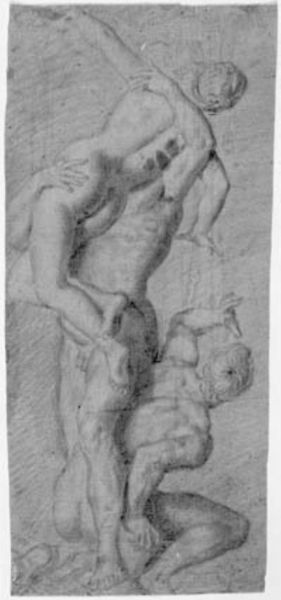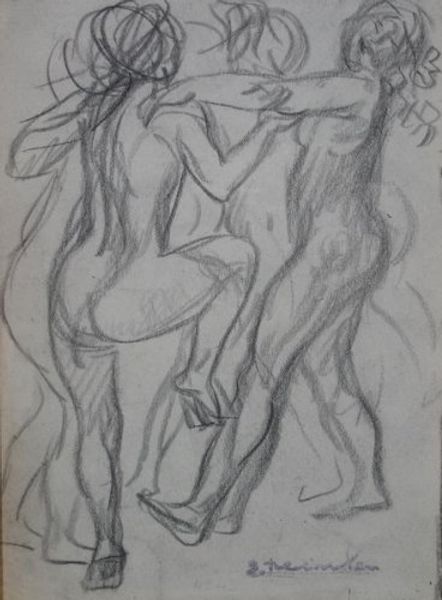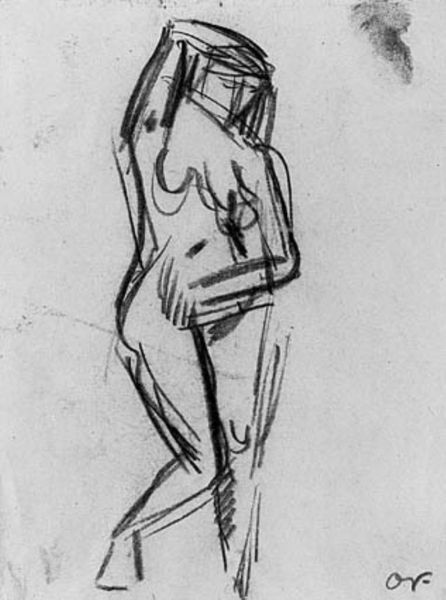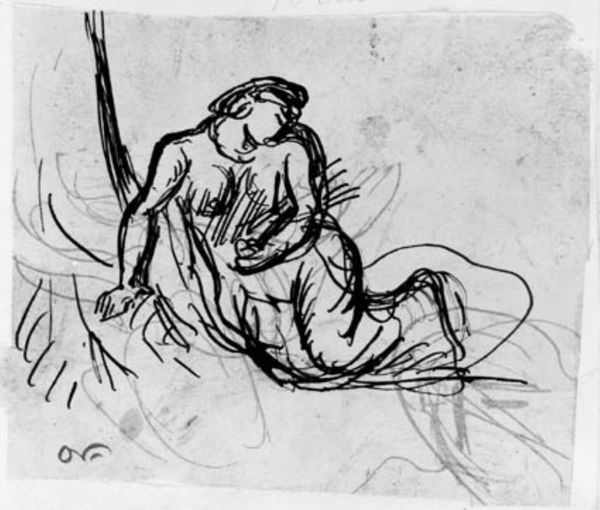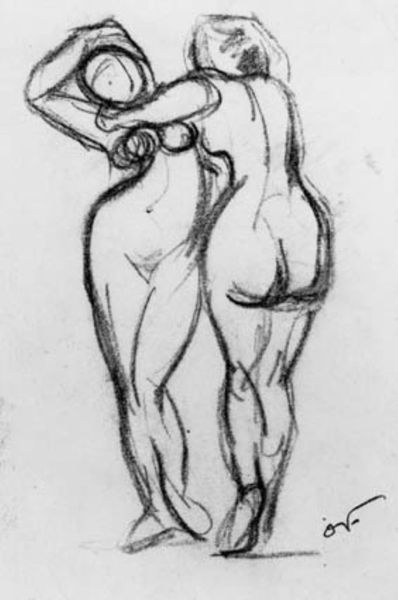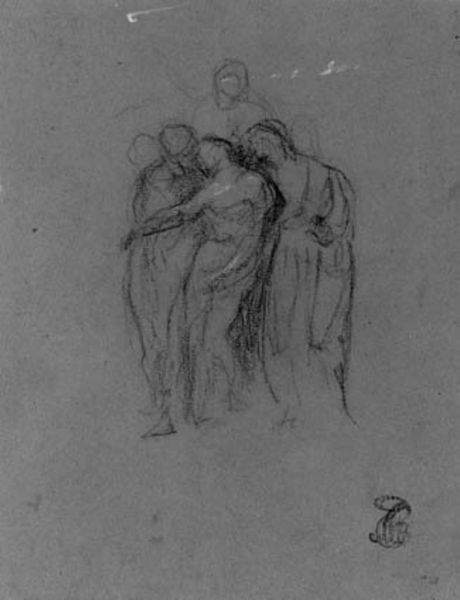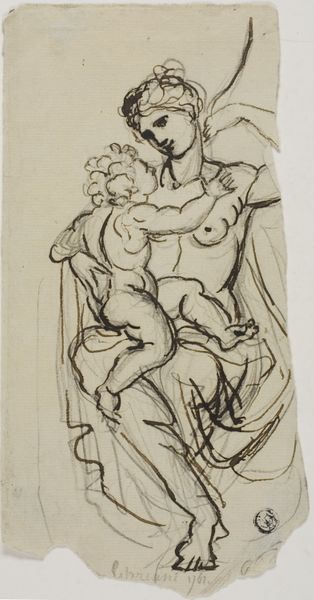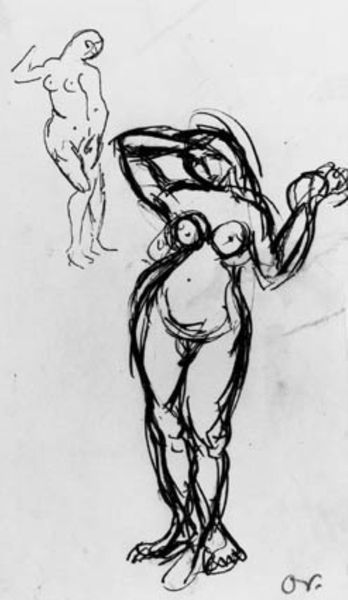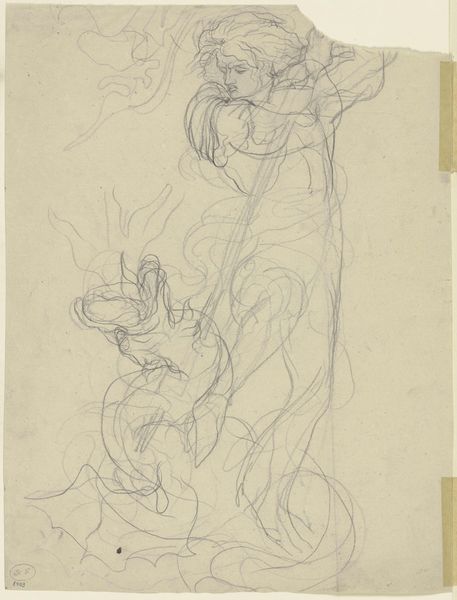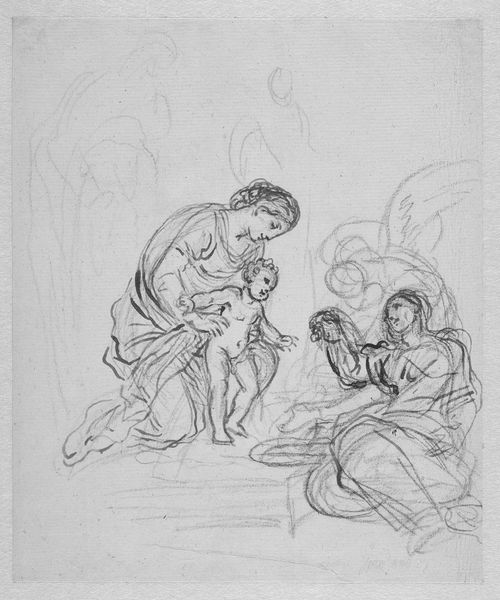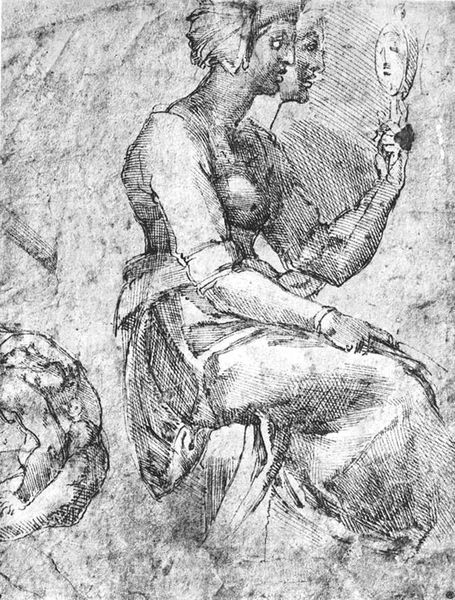
drawing, pencil
#
drawing
#
landscape
#
figuration
#
pencil
#
symbolism
#
history-painting
#
nude
Dimensions: 205 mm (height) x 104 mm (width) (bladmaal)
Editor: So, here we have Othon Friesz's pencil drawing, "Adam and Eve," from 1910. The sketch feels almost… unfinished, raw. What I’m curious about is how it plays into the historical narratives around representing these biblical figures? Curator: That’s a fantastic point. Consider that early 20th-century art was grappling with established traditions, particularly within religious imagery. Friesz, aligning with Fauvist principles, likely aimed to move beyond academic renderings of the body and narrative. How do you think its sketchy quality challenges expectations of historical painting? Editor: Well, I’d assume viewers at the time might’ve found the loose lines and simplified forms shocking when placed next to more classical depictions. It lacks a certain… reverence, almost like a snapshot rather than a posed scene. Curator: Precisely! And consider the social context: traditional values being questioned, new ideas about human nature emerging. A less polished, more "real" Adam and Eve resonate with that shift. Do you see hints of this rebellion also reflected in other works of the time? Editor: Hmm, like Picasso dismantling traditional forms in his paintings, or maybe even some of the Symbolists and their darker takes on mythology… This really recontextualizes the image in a historical perspective. Curator: Exactly. And seeing Friesz’s work in relation to these broader art movements underscores the sociopolitical charge it carries beyond its religious subject matter. Editor: This conversation completely shifted my perspective on this work. I initially viewed it as unfinished. Now I think about the artistic decision to abandon conventions. Thank you! Curator: And for me it shows that we cannot analyse one image without its context. It changes everything, doesn't it?
Comments
No comments
Be the first to comment and join the conversation on the ultimate creative platform.

